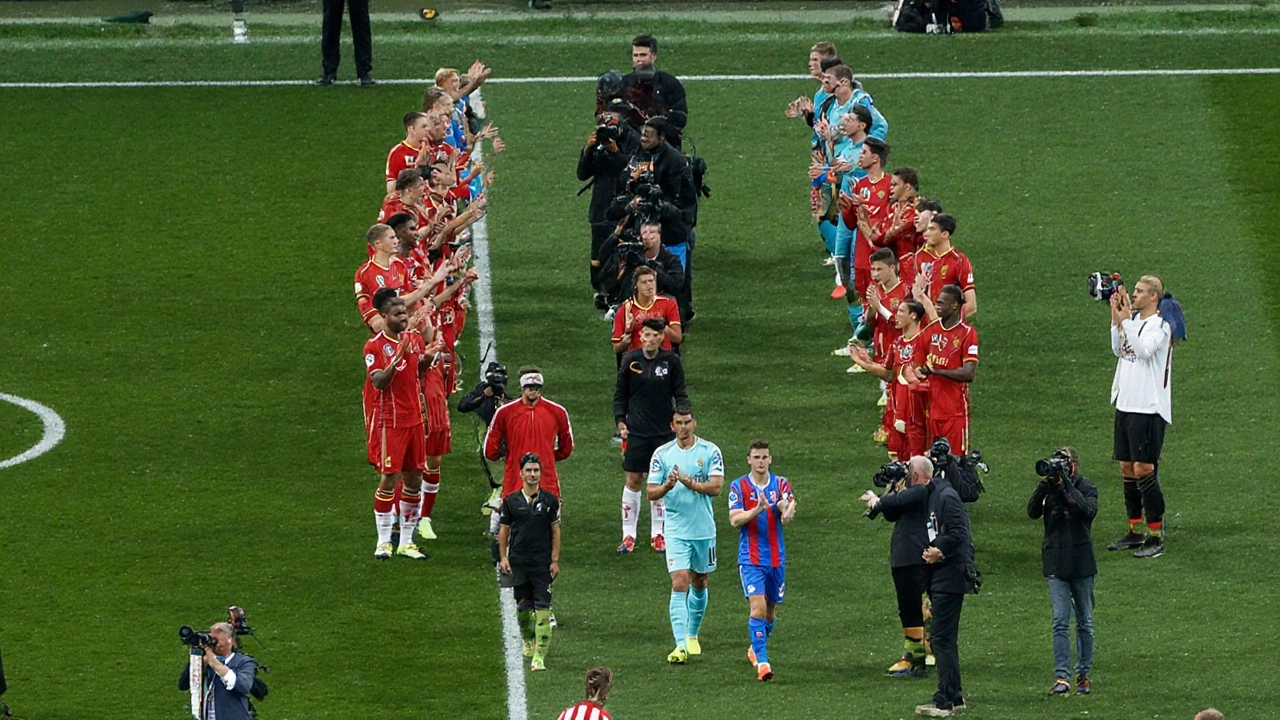Guard of Honor – What It Is and Why It Matters
When you see a line of soldiers standing perfectly still as a dignitary arrives, you’re witnessing a Guard of Honor, a formal military formation that greets heads of state, royalty or other important guests. Also known as an honor guard, it combines precise drill, synchronized movement and respectful protocol. The purpose is simple: to show respect, signal national pride, and mark the significance of the moment.
The military ceremony, any organized event that follows strict ritual and uniform standards provides the framework for a Guard of Honor. Within that framework, state protocol, the set of official rules governing diplomatic and ceremonial conduct dictates when and how the formation is deployed. A national flag often leads the procession, linking the visual display to the country’s identity.
Key Elements of a Guard of Honor
First, the formation itself: typically a platoon‑size group, arranged in rows and columns, each member armed with a rifle or ceremonial sword. Second, the drill: every step, raise of the weapon and salute follows a pre‑written order, ensuring flawless timing. Third, the accompaniment: a band or bugle may play the national anthem, while the flag bearer carries the national flag, the symbol that represents the nation’s sovereignty. Finally, the venue: airports, stadiums, and historic sites are common stages, turning the ceremony into a public spectacle.
These elements connect in a clear chain: the state protocol requires a precise military ceremony; the military ceremony includes the guard formation; the guard formation features the national flag. In practice, you’ll see a Guard of Honor at a presidential inauguration, a diplomatic reception, or a sports championship opening – each event tapping into the same core ideas of respect and national pride.
Why does this matter for everyday readers? Because the Guard of Honor is a living tradition that pops up in tourism marketing, sports broadcasts and even viral videos. A tourist brochure may highlight a capital city’s daily Changing of the Guard as a must‑see attraction. A football club’s pre‑match ceremony might feature a local honor guard, linking sports fans to a larger cultural narrative. Understanding the ceremony lets you appreciate the symbolism behind the spectacle.
Historically, the Guard of Honor dates back to royal courts where elite troops stood at the entrance of palaces. Over the centuries, the practice spread to republics, where the focus shifted from monarchic tribute to national representation. Modern armies retain the tradition, but they also adapt it: some countries now use women in the formation, others incorporate indigenous music to reflect cultural diversity. This evolution shows that while the core idea – showing respect through disciplined display – stays the same, the expression can evolve with society.
From an operational standpoint, organizing a Guard of Honor demands coordination across several entities. The defence ministry plans the drill, the protocol office sets the timing, and the civil authorities handle crowd control. This collaboration mirrors the semantic triple: Guard of Honor encompasses military ceremony, military ceremony requires state protocol, and state protocol influences the national flag presentation. When you break it down, the ceremony is a network of interlocking responsibilities.
For anyone planning to attend an event, knowing the basics helps you read the cues. When the marching music starts, the flag is raised; when the troops salute, the dignitary steps forward. These moments are not random – they’re scripted to convey order, respect, and unity. Spotting the details can turn a fleeting image into a deeper appreciation of the country’s heritage.
Below you’ll find a curated collection of articles that explore the Guard of Honor from different angles – from its role in boosting tourism in African capitals to its appearance at major sports finals. Use this guide to dive deeper into the traditions, the modern twists, and the practical side of organizing such a ceremony.

27
Sep
In the season‑closing Premier League clash at Anfield, Liverpool and Crystal Palace created a one‑of‑a‑kind moment by exchanging guards of honor. The Reds saluted the Eagles' first FA Cup win, while Palace celebrated Liverpool's 20th league title. The dual ceremony highlighted sportsmanship and the historic milestones each club reached.
Read More
